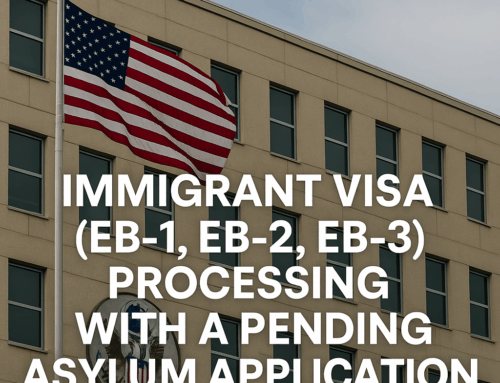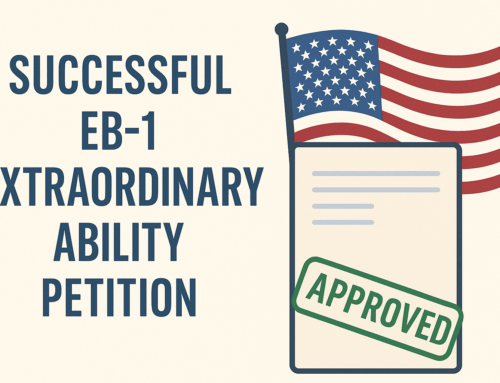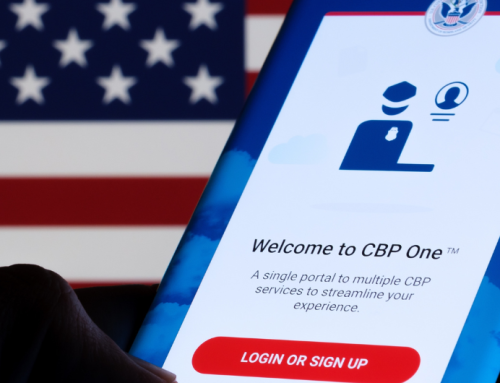Separation/Divorce and Conditional Permanent Residence
If you obtained green-card based on your marriage to a United States citizen, you will most likely receive a so-called “conditional permanent resident” card (unless you have been married to your U.S. citizen spouse for more than two years at the time your green-card is approved). A conditional green-card is only valid for two years. Within 90 days before your conditional card expires, you must file Form I-751 with the United Citizenship and Immigration Services (USCIS) to remove conditions on your permanent residence and obtain a permanent green-card that is not tied to your marriage and is valid for 10 years.
Under normal circumstances, you and your U.S. citizen spouse must sign the petition together and submit additional evidence to prove that you are still married and living together for the last two years. However, in some cases, by the time you have to apply to remove conditions on your residence, you may be separated or even divorced from your U.S. citizen spouse. If you are separated but not divorced, you may still file the petition together with your U.S. citizen spouse. However, it is crucial that you answer all questions on the application truthfully and disclose that you are living apart. If an interview is scheduled, your spouse must appear with you. If you are separated because you will be divorced, you need to file without your U.S. citizen spouse, mark in the application that you are “divorced”, and clearly disclose in an addendum that you are separated but not divorced. The USCIS will accept your case and issue a receipt, which will automatically extend your green-card for one year. When the USCIS officer eventually reviews your case, he or she will see that, at the time filing your petition, you were separated but not divorced. Therefore, assuming that you got divorced within the time between filing and the time when the officer begins reviewing your case (usually 10-12 months), the officer will send you a request for evidence (RFE) asking for the divorce certificate or decree. The officer will give you 87 days to respond. If you did get divorced by then, you would submit a copy of the divorce decree. If your divorce is still pending and the deadline for the RFE is close, you must send the response explaining the delay and asking for additional time. The USCIS may give you additional time, send you a notice of intent to deny (NOID) giving you additional 87 days, or outright deny your case, but allowing you to refile.
If you are divorced, you may apply for a waiver of the joint filing requirement based on your divorce. In that case, you do not have to wait until 90 days before the expiration of your conditional card; you can file as soon as you have your final divorce decree. A separation or divorce within the first two years of your permanent residency creates a presumption that your marriage was fraudulent, meaning that you got married just to receive a green-card. You can overcome this presumption by submitting many documents to show that your marriage to the U.S. citizen sponsor was real. It is important to hire an experienced immigration lawyer who can advise you on the documents you can provide and help you organize and prepare the application. Attorneys at I.S. Law Firm have helped many clients receive their permanent green-cards even after divorce from their U.S. citizen spouses.
If you are not divorced yet, but you are not on good terms with your U.S. citizen spouse, you can still apply for a waiver of joint filing requirement. You will need to submit as many documents as possible to prove that your marriage was genuine and that you and your spouse did live together at some point. You will also have to provide a copy of your final divorce decree at the request of USCIS. A waiver of joint filing requirement cannot be approved without a divorce decree, except in cases where the immigrant was abused by his or her U.S. citizen spouse. A good immigration lawyer will advise you on the best timing to file your petition, so that you have enough time to obtain your divorce and provide confirmation to USCIS to avoid a denial of your application.
Sometimes, your circumstances may change while your petition is pending with USCIS. For example, you may have applied for your permanent green-card together with your spouse, but you got divorced while USCIS was processing your application. Or, for example, USCIS may have requested more evidence to process your jointly filed petition, but by the time you receive the request for evidence, you may have separated from your spouse. You should consult with an experienced immigration lawyer about the best strategy and to make sure that your actions will not be considered misrepresentation by USCIS, which may result in your petition denial, deportation, or complications when you apply for any future immigration benefits such as naturalization or sponsoring your relatives.
If you have been abused by your U.S. citizen spouse, you can apply for a permanent green-card by yourself, without a divorce decree, and without waiting until 90 days before the expiration of your conditional card. You will have to submit extensive proof of your good-faith valid marriage with the abusive spouse as well as ample evidence of abuse. A good immigration lawyer will guide you through the process and help you prepare your petition in the best possible way.
Attorneys at I.S. Law Firm have helped many immigrants obtain permanent residency in the United States, including in very complicated cases involving separation, divorce, and spousal abuse. If you received your green-card based on your marriage and need to remove conditions on your residency, please contact us for a consultation today at +1-703-527-1779 or via e-mail: law@islawfirm.com.
NOTICE: The information contained on this page site is intended to educate the general public and is not intended to provide legal advice. To ensure proper handling of your individual situation, please call +1-703-527-1779.
Related: Why Should I Hire a Lawyer for my Marriage-Based Adjustment Case?






